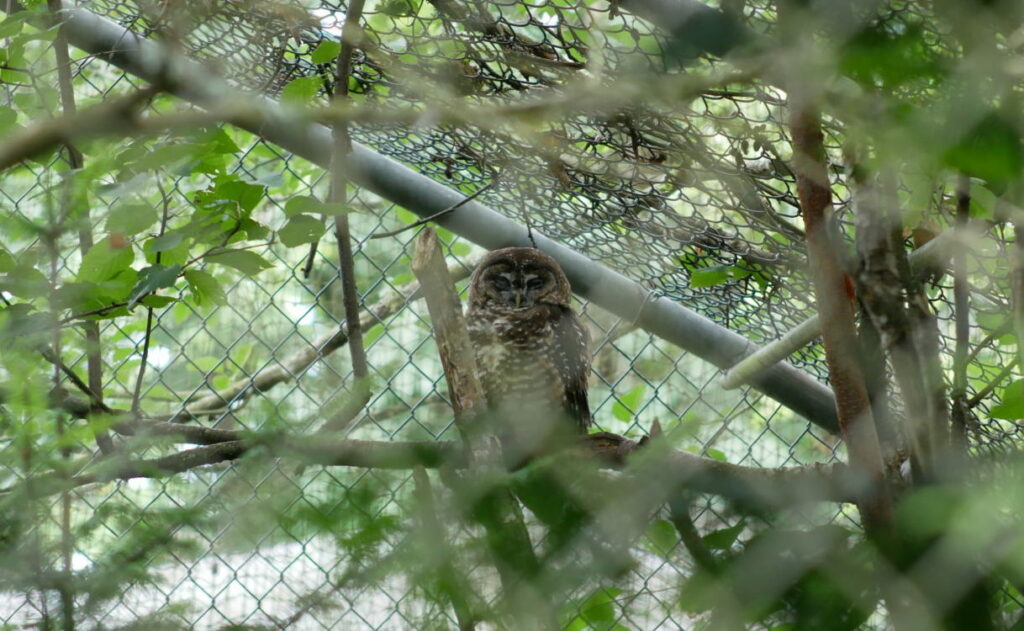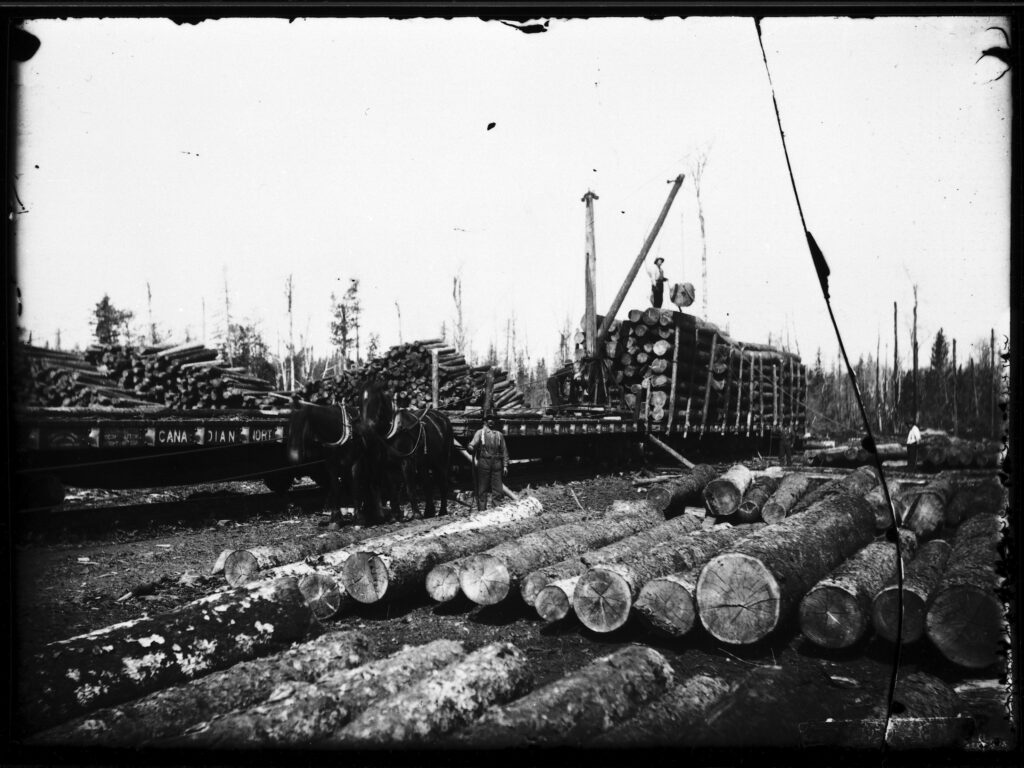Nathan Cullen, British Columbia’s minister of water, land and resource stewardship, has confirmed what many suspected: the NDP isn’t interested in an endangered species law.
A federal Species At Risk Act has been in place for decades, and has immense power when enforced. But it almost never is, and has done nothing to protect B.C.’s ever-growing list of endangered species. Provincial legislation has therefore long been a key demand of conservation groups.
Until recently, the B.C. NDP vocally supported the idea of a provincial act: “We’re one of the only provinces in the country without stand-alone species at risk legislation,” the party’s 2017 campaign platform lamented, promising to change that if elected. After forming government that year, then-premier John Horgan’s first mandate letter to Environment Minister George Heyman directed him to “enact an endangered species law.”
But this language soon softened. There was no mention of endangered species legislation in Heyman’s 2020 mandate letter; instead, the premier urged him to “continue to work with partners to protect species at risk.” Protection for endangered species did not appear at all in his 2022 mandate letter.
I interviewed Minister Heyman in late 2021 and asked him if the B.C. NDP had abandoned its pursuit of species at risk legislation. “No, we haven’t made that decision at all,” he said then. Officials have been cagey on this subject ever since.
But last week, in a wide-ranging sit-down interview with Minister Cullen and Murray Rankin, the minister of Indigenous relations and reconciliation, Cullen finally acknowledged species-specific legislation is officially off the table.
Then he spoke about what we’re getting instead.
Prioritizing ecosystems over single species
“It’s the Biodiversity and Ecosystem Health Framework,” Cullen told me. That wonky phrase invokes a vast new architecture of land-use legislation that Cullen’s ministry is now drafting: since conservation and species at risk protection is inextricably linked to Indigenous Rights, it’s being done, in close collaboration with Rankin’s ministry and the more than 200 First Nations in B.C.
The province published its draft framework last November. It was open to public input through January; Cullen’s ministry is still reviewing the “thousands” of submissions it received, according to a spokesperson. A finalized framework is expected later this year.
As spelled out in the draft, the framework’s purpose is “to provide strategic direction that sets the course for changes in legislation and current practices that aligns the province’s commitment to [the United Nations Declaration on the Rights of Indigenous Peoples] with specific goals that are intended to maintain and enhance biodiversity and ecological integrity.”
In other words the framework is a blueprint for the legislation we’re getting instead of a provincial species at risk act, but not the legislation itself.
All this is inextricably linked to implementing the Declaration on the Rights of Indigenous Peoples Act. That’s why the minister of Indigenous relations and reconciliation took part in an interview that was notionally about ecosystems.
As Rankin put it: “How can you set aside land, how can you deal with new land use arrangements, without the involvement of the people who have rights and title in the area? It’s just not doable.”
The Narwhal reached out to the Union of B.C. Indian Chiefs, the BC Assembly of First Nations and the First Nations Leadership Council in B.C. for comment, but none responded by publication time.
Cullen called the coming legislation a more “holistic” approach to nature protection than an endangered species law, in part “because it includes people into the conversation.” He described species at risk legislation as “a very blunt instrument” that provokes so much public pushback, including from First Nations, it’s often unviable.
“It doesn’t do any economic analysis, it doesn’t incorporate land use planning, it’s just a ‘Thou Shalt,’ ” Cullen said, when the focus should be “not just on one species, not just in one valley, but across an entire landscape.”
Following through on the Old Growth Strategic Review
The concept of “biodiversity and ecosystem health” comes directly from the province’s landmark 2020 Strategic Old Growth Review, which had a profound influence over the NDP’s environmental policy. The authors — two registered professional foresters, one a member of the Tahltan Nation — delivered 14 recommendations for overhauling the way resource extraction is carried out in this province. The NDP endorsed every one.
The first recommendation was to “engage the full involvement of Indigenous leaders and organizations.” The second was for the government to declare the “ecosystem health and biodiversity of British Columbia’s forests as an overarching priority and enact legislation that legally establishes this priority for all sectors.”
“That was a pretty profound commitment,” Jessica Clogg, executive director and senior counsel for West Coast Environmental Law, said. “It opened up a potential for law reform that quite frankly had felt closed before that time.”
Clogg explained the second recommendation “arose from the analysis of how our existing legal structures are hardwired for failure — they’re set up to prioritize resource extraction” over ecosystem health. Flipping that equation on its head is at the heart of the “paradigm shift” British Columbians have been hearing a lot about lately. (That term also appears in the Strategic Review.)
Prior to 2020, West Coast Environmental Law spent years advocating for endangered species legislation. But once the province announced support for an ecosystem-based approach, “we could see the potential for that type of legislation,” Clogg said.
Cullen talked about shifting paradigms, too. “The lens through which we looked at land-use planning for most of this province’s existence has been a forestry-dominant lens,” he said. That was written into the legal fabric of B.C.; one of the more egregious examples both Cullen and Clogg mentioned was the Forest and Range Practices Act’s “unduly clause,” which gave forestry a trump card to play over any concerns — whether from First Nations, recreational users or other industry — that might “unduly” affect a harvest.
The NDP scrapped the unduly clause in February 2023. That was one year after the creation of the ministry Cullen now heads, itself an example of the NDP’s huge legislative manoeuvres. In just two years, the Ministry of Water, Lands and Resource Stewardship has amassed immense power, taking partial or total control of several pieces of legislation, including the Water Sustainability Act, Wildlife Act, the Land Act and 24 more.
It’s encouraging that a ministry tasked with mandating province-wide ecosystem protection appears to have real clout. But progress has been achingly slow, especially in light of the rapacious pace of industry. As Clogg noted, the Old Growth Strategic Review’s authors recommended laws, not a multi-year-process to create a blueprint for those laws. “I don’t think a non-binding framework is a replacement for a legislative regime,” she said.
Last dash for cash
You don’t have to look far to see industry exploiting the slow advance of legislative change to make a last dash for riches. Invariably, this happens with the help of other ministries of the same government.
Consider two prominent examples: first, as reported by resource policy analyst Ben Parfitt, the number of drilling permits the BC Oil and Gas Commission granted to Malaysian energy giant Petronas on Treaty 8 territory, in northeast B.C., rose by an order of magnitude once Blueberry River First Nations entered their historic court battle against the cumulative impacts of industry. By the time Blueberry River won in 2021 and new drilling permits were paused, Petronas and another company, Tourmaline, had acquired enough permits to keep fracking for about 25 years on Treaty 8 territory.
Exhibit B is the poster child of B.C. endangered species: the spotted owl. The last wild member of the species in Canada lives in the old growth canyons of the lower Fraser River, in Spuzzum First Nation territory. Logging continues there, too, authorized by the Ministry of Forests against the express wishes of the nation.
I spoke to Spuzzum Chief James Hobart a week before my conversation with Cullen. “Nothing has changed,” on the ground, Hobart told me. “There was a letter that came out from the BC Timber Sales, and it says right on there: if the First Nations respond back that they need more time or they don’t want to consult at this moment, it’s business as usual for old growth taking.”
For Hobart, that’s unacceptable.
“Logging on old growth has to stop until we have a fulsome discussion,” he said. “And industry has to know that it may never start up again.”
But Cullen and Rankin said there are overlapping Indigenous claims to the territory Spuzzum regards as its own, and other nations have asked for logging to continue. When I asked chief Hobart about this, he acknowledged that Indigenous-owned companies are carrying out some of the logging, but denied there was any ambiguity over whose territory it is.
“It’s almost like they’re pitting First Nations against First Nations,” Hobart said.
Cullen made clear he regarded a blanket ban on old growth logging until discrepancies can be sorted out as overly extreme.
“The set-aside within the Spuzzum territory is significant,” he insisted, referring to the amount of primary forest placed under protection. “The set-aside we did across the province is massive. It’s the largest set-aside of old growth within the province’s history by a long shot.”
Throughout our conversation, Cullen was at pains to emphasize the needle his ministry is threading: biodiversity, ecosystem health and the rights and title of First Nations are essential, but so is the consent of a democratic society whose economic well-being has long been at odds with these principles.
“We ask and insist upon industry to evolve in this regime,” he said. “We also make the same insistence on those who are interested in conservation.”
Jury’s out on how exactly biodiversity will be protected
However that statement grabs you, it’s clear the societal 180-degree turn that a genuine paradigm shift demands has already caused a degree of cultural whiplash — something any government ignores at its peril. One hundred fifty years of colonial indifference to biodiversity and Indigenous rights have baked in certain attitudes. Paradigms may be shifting, but the old way of seeing things has hardly been extinguished.
The recent debacle over amendments to the Land Act — one of countless statutory tweaks Cullen’s ministry is trying to implement, in this case aimed at sharing decision-making authority over land use with First Nations — showed how easily these shifts can be weaponized. “It is an assault on your private property rights and our shared rights to use Crown land,” John Rustad, leader of the B.C. Conservative party, said even though the amendments were spelled out in the Declaration Act that he, like every single member of the legislature, voted for in 2019.
BC United Leader Kevin Falcon, whose party also voted unanimously for this in 2019, declared his party “cannot support giving veto power to five per cent of the population with impacts to over 95 per cent of the land.”
Even as the paradigm shift proceeds too slowly for many, the appearance of moving too fast presents a direct threat to the NDP in an election year. Minister Cullen ultimately blinked: at the end of February, he announced a pause on the Land Act amendments, “to take the time to further engage with people and demonstrate the real benefits of shared decision-making in action.”
“There’s a need to have a dialogue, and essentially socialize folks to the reality that it isn’t whether they’re going to do this, but how,” Clogg allowed.
But the question at the heart of these conversations remains the same, cutting sharper every day: how many species will disappear while British Columbians negotiate the best way to save them?
Updated on March 22, 2024, at 6:21 a.m. PT: This story has been updated to correct a statement that BC United Leader Kevin Falcon voted for the Declaration on the Rights of Indigenous Peoples Act in 2019. Falcon was not an MLA in 2019, but his party voted unanimously for the act.


